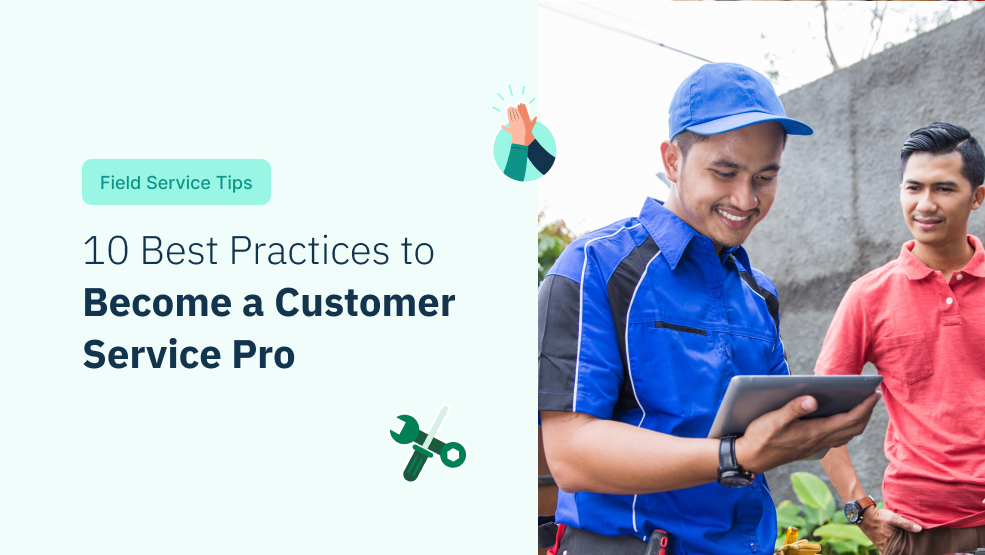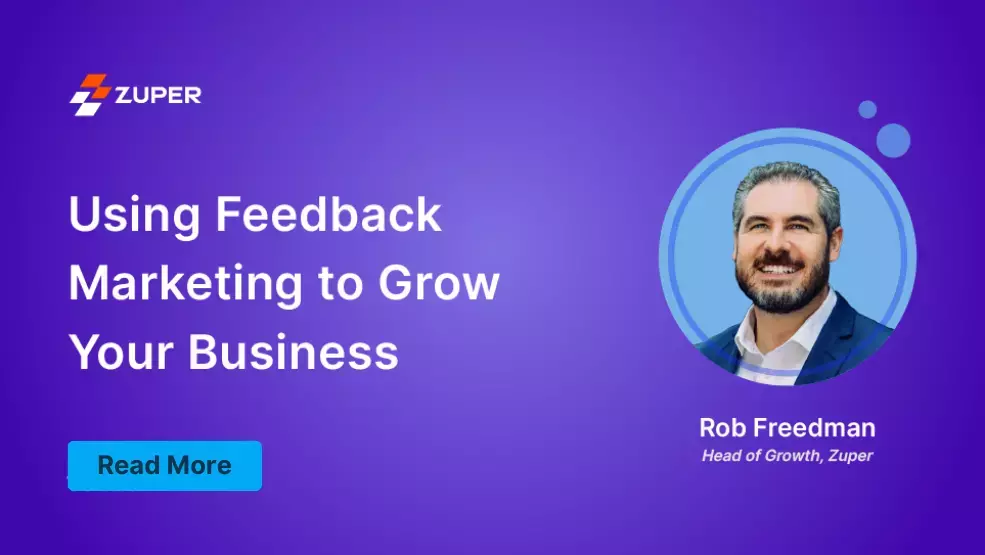Customer service is not just pleasant greetings and quick responses; it is about building long-term commitment with your customers by providing expert solutions time after time. Your partners and support team are vital to this mission, helping to ensure that your customers receive exceptional customer service.
What is exceptional customer service? Gone are the days when a customer would come to a service center to file a request, make a complaint, or ask a question of the support team. Today, everything is done online. From the comfort of their own home, customers can now instantly ask their questions of chatbots—24 hours a day, seven days a week. This level of convenience has given customers more autonomy to solve their own problems, all due to companies choosing to adopt customer portals.
Given this new reality, the old way of dealing with customers just won’t work anymore. Customer service has changed, so your path to exceptional outcomes needs to change with it. The only ways to win over customers is through your product and through the service you deliver. Below, we share ten tips to supercharge your product delivery and improve customer satisfaction.
1. Offer multiple communication channels
Flexible communication channels are a must. Each customer will have their own communication preferences. A mobile app, or website providing multiple avenues of communication will help you to appeal to the widest cross-section of customers. Email, social media, chatbots, and in-app chat with a “real live person,” are each communication channels that appeal to different people. Not everyone likes talking on the phone. So giving people the option of chatting with a support agent instead, is one way you can make yourself more customer-centric. For others, doing their own research is more their speed. For customers like this, providing access to FAQs and chatbots that address their questions will be a better way to provide customer services in a way that your customers what to be served. In short, your products or services should have multiple channels of communication—making it easy for customers to connect with you quickly.
Meet Smith, who is the manager of a large apartment complex. Let’s see her preferred way of reaching customer service depending on different situations.
- Urgent maintenance issue: A pipe bursts in one of the apartments, requiring immediate attention from a plumber. Smith needs a fast and efficient solution. They whip out their phone and use the in-app chat function within the property management software. A live customer service representative promptly connects with them, understands the urgency, and helps them locate a qualified plumber in the area.
- Clarifying a feature: Smith wants to explore a new feature in the software to automate rent collection reminders. Now he prefers a self-service approach and utilizes the software’s built-in knowledge base. There, he finds a comprehensive guide with step-by-step instructions and screenshots, allowing them to learn at their own pace.
- General inquiry: Smith has a quick question about tenant background check processing times. He does not want to interrupt their workflow with a phone call. So, he decided to send a quick email through the software’s messaging system. Then the customer service team responds within the hour, providing a clear and concise answer.
2. Be a partner and not a vendor
The next best practice is thinking of your customers as partners, not just clients. This means taking the time to really understand what they need and working together to solve any problems that come up. By doing this, you can customize your software to better meet their needs and make sure they are getting the most out of it. That doesn’t stop there. You also need to be open to feedback and always be looking for ways to improve your software product. This approach helps build trust and loyalty with your customers, leading to long-term relationships and a strong customer base.
Let’s say one of your customers is having trouble with the scheduling feature in your software because their projects often change at the last minute. Instead of just providing a quick fix, you take the time to sit down with them, understand their workflow, and customize the scheduling feature to better accommodate their needs. This not only solves their immediate problem but also shows them that you’re committed to their success. As a result, they’re more likely to renew their subscription and recommend your software to others in the industry.
3. Give them the opportunity to give feedback
Providing customers with the chance to offer feedback is pivotal for enhancing their experience. This helps in getting insights into your customer needs, enabling the company to make tailored improvements to its software, such as adding new features or enhancing existing ones. By consistently collecting feedback, the company can continuously enhance its software based on real user experiences, ensuring its relevance and value over time.

Moreover, soliciting feedback demonstrates to customers that their opinions are valued, fostering stronger relationships and increasing loyalty. This process also enables proactive issue resolution, as the company can identify and address issues before they escalate, thus improving overall satisfaction. Additionally, feedback can inspire innovation by providing insights into emerging trends or customer needs, helping the company stay ahead of the curve and drive product innovation. Overall, offering customers the opportunity to provide feedback is instrumental in elevating the customer experience for a SaaS company in this space.
4. Share case studies of similar customers
People learn best through relatable examples. When a customer faces an issue, find similar situations and look at the solutions used previously. This demonstrates your expertise and shows the customer you’ve helped others navigate similar challenges. Imagine a customer frustrated by syncing issues with their new fitness tracker. As a customer service professional, you wouldn’t just troubleshoot basic steps. Search your company’s internal knowledge base and look for similar cases. Did another customer experience Bluetooth connectivity problems? Did similar issues crop up after a system update? Share a concise case study—anonymized, of course—outlining the troubleshooting steps used to successfully resolve the problem. This approach achieves several things. First, it validates the customer’s experience and shows you understand their pain point. Second, referencing past successes allows you to demonstrate your knowledge and experience. Finally, it empowers the customer by providing a clear roadmap for resolving their issue.
5. Give accurate information and clear explanations
Providing clear explanations and accurate information is a crucial step in improving customer service. When you offer clear explanations, you help customers understand how your product or service works and how it can benefit them. This clarity can reduce confusion and frustration, leading to a more positive experience. Additionally, providing accurate information builds trust with your customers. When customers know they can rely on you for accurate information, they are more likely to have confidence in your brand and continue doing business with you. Overall, clear explanations and accurate information are essential for enhancing the customer experience and building strong, lasting relationships with your customers.
Imagine an HVAC company that recently adopted field service management (FSM) software, hoping to enhance its operations. However, while configuring the software to meet their specific needs, they encountered some challenges. When they reached out to the customer support team, they provided them with clear, customized instructions tailored to their HVAC business and the particular issues that they were having. Additionally, the customer service rep offered accurate guidance on software integration and troubleshooting. As a result, they were able to successfully set up the software—leading to improved efficiency and streamlined operations. This personalized support not only helped them maximize the value of their investment but also provided us the opportunity to prove our reliability—strengthening trust and helping to ensure a long-lasting partnership.
6. Take responsibility and fix the situation
Customers don’t want to be bounced around or feel like their concerns fall on deaf ears. Take ownership of the issue, apologize for any inconvenience, and assure them you’ll find a solution. A customer calls in, upset because their scheduled appliance repair appointment was a no-show. Don’t deflect blame on the technician’s schedule. Acknowledge their frustration and apologize for the inconvenience. Explain the steps you’ll take to rectify the situation. Will you immediately dispatch a new technician? Can you offer a discount on future service calls to compensate for the disruption? Following up proactively demonstrates your commitment to finding a solution.
7. Anticipate their needs and go beyond the complaint
A true pro looks beyond the immediate problem. Actively listen to the customer and identify any underlying concerns or frustrations. Can you offer additional resources preventive measures, or suggest upgrades that enhance their experience? Going the extra mile shows the customer you value their long-term satisfaction, not just resolving the current issue. A customer contacts you about a malfunctioning coffee maker. As you troubleshoot, ask open-ended questions. “How often do you use the coffee maker?” “Have you encountered this issue before?” While fixing the current problem is crucial, a customer service pro digs deeper. Perhaps the customer relies on their morning coffee for work, and this malfunction throws off their entire routine. Offer expedited repairs or a temporary loaner unit to minimize disruption. Maybe the malfunction is due to hard water build-up. Suggest descaling solutions or preventative maintenance tips to avoid future issues.
By anticipating their needs and offering solutions beyond the immediate complaint, you show the customer you value their long-term satisfaction. This proactive approach fosters customer loyalty and can turn a negative experience into a positive one. They’ll remember you not just for fixing the coffee maker but for understanding the bigger picture and taking steps to prevent future problems.
8. Leverage built-in reporting tools
Most customer service platforms offer built-in reporting features. Utilize these tools to identify trends and recurring issues. Analyze data to understand common customer pain points. Proactive use of reporting allows you to address systemic problems before they snowball, improving the overall customer experience. For example, imagine a surge in calls about malfunctioning sprinkler systems in a particular neighborhood. Investigate further. Is there a new construction project nearby that might have damaged underground lines? By identifying a potential root cause, you can proactively contact affected customers and schedule preventative maintenance checks, saving them from future disruptions and potential water damage.
9. Tell how resolving issues translates to cost savings
Customers in the field service industry often face downtime and lost productivity due to equipment malfunctions. When resolving issues, explain how your efforts translate to cost savings for them. For instance, a prompt repair of a broken heating system prevents potential burst pipes and costly water damage.
Take it a step further. Offer customers resources on preventative maintenance. Sharing online tutorials on filter cleaning or basic troubleshooting can empower them to identify minor issues before they escalate into major breakdowns. This proactive approach demonstrates the value you bring beyond just fixing problems, positioning you as a trusted advisor who helps them optimize their equipment lifespan and minimize future service needs.
10. Save time with a solid grasp of subscription plans
In today’s subscription-driven world, customer service reps who understand subscription plans have a significant advantage. This knowledge allows them to guide customers effectively, matching them with the right plan and reducing the risk of mismatched subscriptions. Knowledgeable representatives can often handle minor billing inquiries and issues in addition to subscription-related questions, saving customers time while also demonstrating a pervasive understanding of their product. They can also identify upsell opportunities, suggesting upgrades or add-ons that better suit customers’ needs, increasing customer lifetime value. Understanding subscription plans also enables representatives to solve complex issues more effectively, addressing the root cause and preventing future frustrations. Overall, this knowledge builds trust with customers, fostering long-term satisfaction and loyalty.
Subscribe to our Newsletter for valuable insights on the field service industry.
Step up and be a force for good. For every T-shirt you wear, over 700 gallons of water is consumed. You hold the power to reclaim gallons of water with every garment you wear. Choose minimalism; Save water. Mindful closet for a sustainable future!






